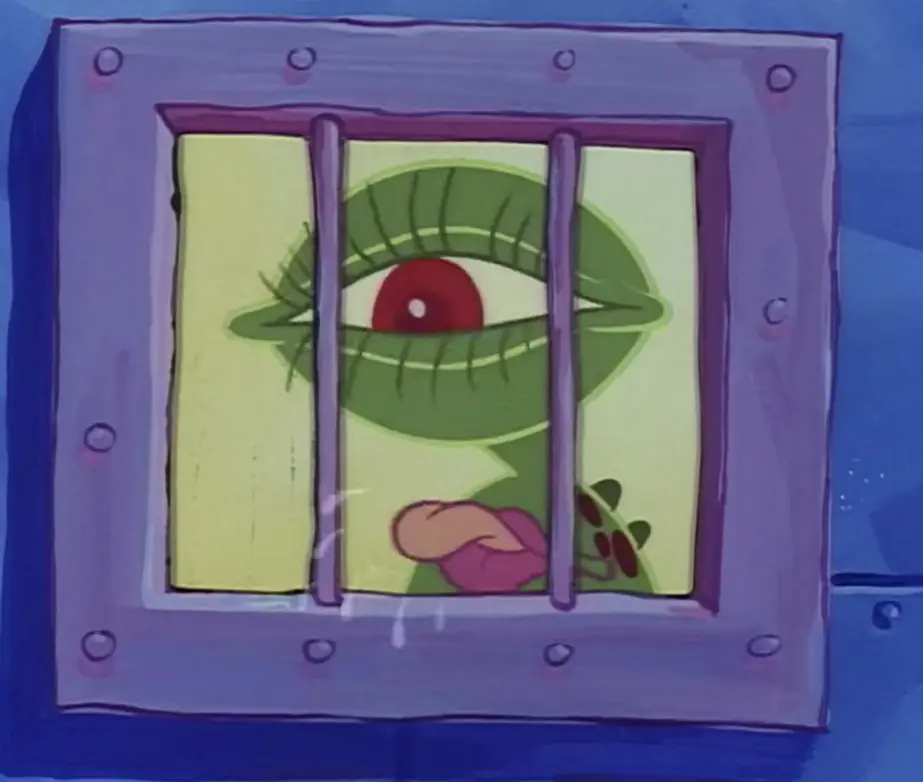Incandescent light bulbs are officially banned in the U.S.::America’s ban on incandescent light bulbs, 16 years in the making, is finally a reality. Well, mostly.
can we ban standard time and permanently switch to DST now too?
DST is the best thing ever. Who doesn’t want more daylight after work?
Oh yay it’s bright at 4am in the morning when I’m asleep.
Just pick a time and stick with it
What about 4am in the evening?
i thought we did?
oh fuck me we didn’t
Ha, do you live in Arizona?
Senate passed the bill by unanimous consent, although several senators stated later that they would have objected if they had known that the bill could pass. No iteration of the bill has passed the House.
WTF? Why the heck would those people have wanted it to fail and why would they vote for it if they did?
And since it got unanimous consent in the Senate, why the heck didn’t it go to the house? It’s the rare case of a bill that I think everyone likes.
To appease voters
Tell me your government is fundamentally broken without telling me…
Why are Republicans mad about it?!
Tradition
Because they were born.
because they think we should be burning whale oil
Because they’re driven entirely by emotion, not rationality. They were told to be angry about it, so they are. Plus, Biden or something.
Something about limiting consumer choice, but everyone purchased LED bulbs to begin with anyways…
ban isn’t needed or good
Found the fuck who thinks others will blindly believe statements made by random strangers on the internet with 0 credible sources or proof just like they do lmfao
I’m not sure what you’re trying to say here, I just think that if the technology is good enough, people will adopt it anyway so it’s not needed, and bans can be bad like idk if you support banning drugs but it can create unintended harms (maybe there is a legit use for the old bulbs in some places, and by no means have people used up the supply we already have)
These aren’t really sound points, although they’re logical on paper.
This is namely because you’re over simplifying matters. People don’t just adopt things because they’re “good”
Look at Betamax, that shit was definitely better than DVD technically but people still bought in. As much as I’d love to believe in simple, traditional economic ideals - they’re just sugar water and it’s sure to cause vision problems if you continue to consume it so recklessly
True, but most of the US already did buy into LEDs.
LEDS are not the the problem, it’s the soldering them that inconveniences most people.
There’s plenty of startups that are pushing for more modular (think Lego brick) technologies to help us be more sustainable and replaceable in the digital age
It’s the same reason lightbulbs aren’t hard wired to the house and are instead fastened
I wonder if this will have any effect on the film industry…
I would think they’ll be mostly over to LED by now.
I had always used incandescent bulbs in practicals but now there are LED bulbs made specifically for film sets. Household LED bulbs are usually a mess on camera with ugly color spikes and/or flickering.
I’ve been lighting almost exclusively with LED these days aside from some HMI’s, but even those are starting to get LED competition, at least for smaller ones.
Thanks for your response! If you light events with broadcast cameras, I am the annoying video engineer behind the camera controls asking about flicker and color balance. I hope they keep making y’all’s specialty bulbs. Looks like there’s a big list of exceptions!
Look at the Power Factor (PF) and Colot Reproduction Index (CRI) of the LED light bulb.
If the former is something like 50% then it means it has a cheap power rectifier inside (little more than a bunch of diodes) which doesn’t at all filter the power fluctuating nature of AC (basically all it does is make the negative side of the sinusoidal wave that’s AC become positve and leaves the whole voltage variance from 0 to max and back untouched) hence the flickering.
The latter quite literally tells you how good the colors look under that lighting. You want at least 90%, with more being better.
Mind you, nowadays CRI is usually not a problem, but the whole cheap power rectification inside the bulb generally is (because a basic power rectifier can cut 10% or more of the manufacturing price of a lightbulb).
Cri is a common specification I see, even if I suspect lots of lying. Where do you find PF information? I don’t remember ever seeing it on any bulb packaging before.
Yeah, that’s the problem: PF is not mandatory to be in the packaging so it’s not usually there.
If you buy online, sometimes you can find it in the product information section.
I’ve noticed that the “usual chinese sellers” will mention it if it’s good (say, 80%) but not when it’s the cheap-converter one (50%).
Alternativelly when looking for the bulbs not likely to flicker you might also look for the “dimmable” ones, as the abiloty for a light lamp to support an external dimmer requirex a better power converter inside the bulb.
Yikes. Put a brand new LED bulb in my basement on Sunday. It was dead on Wednesday. Incandescent seems to be the only bulbs that last down there. I better stock up before the stores run dry…
Where do we get light bulbs now for our ovens and other specialty locations that require the old incandescent light bulb?
RTFA. There are a whole list of exceptions, and appliance bulbs are the first bullet point.
Specialty bulbs are still produced but even those are shrinking.
I recently bought a very low power/low lumen LED light bulb and it was rated for refrigerator and other low temperature use.
Hoven lamps will eventually suffer the same fate.
Incandescent oven bulbs will probably not be replaced, simply because there is no reason for it. The “wasted” energy from an incandescent bulb is expelled as heat, and extra heat in an oven is not a problem. You can describe the bulb in an oven as a tiny heater that just happens to give off a bit of light.
In fact, I use my oven as a proofing chamber for bread making in the winter. Turn on the oven light and leave your dough in there to proof, keeps it at a nice ~25 C.
I would recommend you to buy a dedicated proofer. It provides not only accurate temperature control, but also humidity control. It’s the best investment if you’re serious about bread making.
I tend not to collect single purpose devices as they take up too much space in my limited storage, and a warm cabinet made by my oven light is good enough for some homemade sourdough which we make about once a week.
Well, my proofer is not a single use device. It allows me to ferment multitude of foods, slow cook things and also works as a sous vide. But yeah, if you bake just for fun and not very serious about it, then you don’t need it.
Is it just like a temp controlled cabinet?
Incandescent bulbs were banned in the eu loooong time ago, I simply go to store and buy a new oven bulb when it pops. Yes they are still incandescent, because there are exceptions in the law.
I live in the UK where they’ve been banned as part of the EU directive since 2016. What I can tell you is that you can still get incandescent light bulbs for an oven. I bought one probably a year ago for mine.
There is likely an exception in the law for this.
There are exceptions, like in the European Union.
This was my first thought.
Specialty bulbs are still produced but even those are shrinking.
I recently bought a very low power/low lumen LED light bulb and it was rated for refrigerator and other low temperature use.
Hoven lamps will eventually suffer the same fate.
LED bulbs for refrigerators and freezers are pretty easy to design since the lower temperatures will let the LEDs run more efficiently. Oven lamps might never get LEDs because normal solder starts to melt around 350F and will soften around 200F so unless they start making the bulbs with exotic and expensive solder we will never see LEDs in the oven.
They don’t need to put the light inside the oven. Light pipes are a thing. It’s obvious that it would cost less to put the fixture inside the oven, so that’s probably why we have to put up with incandescent bulbs inside the oven, instead of a better solution that would probably last the life of the oven.
You mean appliance bulbs? They’re a different thing all together
…please don’t tell me you’ve been putting regular incandescent bulbs in places that need appliance bulbs
The U.S. is pretty late with this, compared to the European Union. Only a few special bulbs are still sold here. Apart from that, the only allowed lighting technology is LED.
This applies to all the things, unfortunately. It must be nice to have a functional union. Even though I’m sure it’s not perfect, progress is made at a decent pace. Our country is hijacked by a cruel/angry/illiterate cult every 1-2 elections, it’s not ideal.
Tell that to the bar I was at last night in Palermo. They had a string of festoon lights going down the laneway and every one of them was incandescent. I noticed the same in Taormina. In fact, Italy seems pretty far behind the rest of the EU when it comes to environmental concerns…but that’s for another thread.
Maybe they still run on “new old stock” bulbs until they are used up. But even if they do, they clearly didn’t do the math. I’ve upgraded all my lighting to LED and binned all my incandescent stock.
I’m sitting inside a house where, presently, all lights turned on at the same time will require 30w. Before we went through all the lights, a single lightbulb would use 45w.
Just by replacing the old light bulbs, we reduced energy consumption and the number of lights required to light a room.
I think to update the string of lights you’d need to change transformer. Household bulbs have a driver in the bulb that converts the 230V to the ~12V the bulb uses. But for that string of lights, they’d need to get an electrician (or someone who knows what they’re doing)
While you may need to replace the whole strand, and can’t just swap in individual bulbs, the strand itself has the resistors needed to let the LEDs function, instead of the individual bulbs.
Are you sure they were incandescent bulbs and not just LED bulbs copying the incandescent style? They make a lot of decorative LED bulbs now with straight sections of LEDs to imitate the glowing wire of an incandescent.
Definitely. I’m an electrician, so my eyes are usually drawn to these type of things. Light fittings, outlets, switches, etc.
Are you talking about an Edison bulb?
Having grown up in the era of incandescent bulbs I remember the fancy white bulbs made with frosted glass being more expensive than the totally transparent ones you could see the glowing filament inside, because the filament was irritating to look at and the frosted ones smoothed out the light for you.
I’m very amused that we’re now jumping through hoops to make skinny LEDs that can fake the look of the old filaments nobody wanted to look at back then, and those are now the fancy expensive ones.
This is one example of the LED bulbs I was describing, but there’s plenty of different styles of these being made
Specialty lights are still being sold. Plenty of British pubs have special incandescent lights. They are usually quite dim.
They are not sold anymore, but whatever is left and working can still be used. Many people also bought a ton of incandescents before the selling stopped (tHe lIgHt is sO mUcH bEtTeR!!!)
tHe lIgHt is sO mUcH bEtTeR!!!)
narrator voice: “but it was not”
It generally is though. The look of incandescent and halogen is only rivaled by high end LEDs.
nah. in my experience, even cheaper LED bulbs from discounters can nicely replace old bulbs.
It’s true that what “el-cheapo product” once was done by simply reducing lifetime is currently done with looks.
It can be. Cheap LED lights with low quality AC rectifiers are awful. If those are your point of comparison then yes, incandescent light is better (more steady).
Of course that difference goes away if you just get a better LED light.
Some also have terrible CRI. Nothing like giving everything a subtle green or purple tint.
yeah, i was referring to current tech. First LED or those mercury vapor bulbs were basically useless.
You can definitely get “current” LED bulbs with bad hardware inside still today. See: Everything made by NOMA.
You could also get ultra cheap crappy incendescant bulbs in the past.
deleted by creator
Even the “cheap” LED bulbs are still many times more expensive than incandescent, and incandescent will give much better light than poor quality LED.
The LED bulbs have a higher up front cost, but ive not come across a single instance where an incandescent was cheaper when factoring electricity costs.
Cure rage in certain circles
Can’t wait for this to be the hot button issue in certain presidential campaigns this cycle.
deleted by creator
I took a look at the article and I came out with two points:
-
finally! Congratulations! Join the rest of the world where changing a freaking lightbulb costs you no mental pain.
-
left handed light bulbs? Are these a thing? Are these purpose built for specific applications, like counter clock wise screws?
removed by mod
Light bulb stealing whores
Never crossed my mind to look for such kind of bulb but I’d risk I won’t be able to find it in the local market.
If safety/security is a concern, lights are simply placed at hard to reach locations or are bought with safety housings, which are fairly cheap. In extremis, instead of common voltage bulbs, high voltage are used, thus incompatible with household voltage.
And specific purpose lamps… I may be the odd one but there are other sockets available in the market. Why opt for the basis threaded one?
-
I’ve been in the industry for over a decade and I find it fascinating how much lighting has changed in that time. When LEDs were first available, they were $60+ per bulb. Now you can get multipacks for under $10. Also, CFL bulbs were almost universally hated by everyone (and for good reason) now we no longer sell them. We strictly sell LEDs for regular lighting and we still sell incandescent specialty bulbs. Also, when LEDs first arrived there was a lot of distain for them, especially by the elderly. They wanted their energy wasting incandescent bulbs dammit! It seems the majority of them have come around because they’ve learned that LEDs are better.
This is why I don’t support overreach in regulation.
Put a tax on it or something, but a full ban seems excessive. Now that most people understand that LEDs are superior, they are cheaper, and there are more options, most people will make the switch.
No really. A lot of people, even when shown proof, out of simple spite just double down on their position.
When energy saving and early LED bulbs started to be deployed in my country, while the fade out of incandescent bulbs was put in place, we had runs for buying every single incandescent bulb available. The change was not welcome. Even if changing meant real, objective, tangible savings.
People would put in large orders for bulbs, arguing they wanted to “have proper lighting as long has they lived”. Luckily, the stocks quickly ran out and some distributors simply refused to pass the stocks to the market.
A government cutting off a product is not overreach: it’s forcing change that otherwise would not happen, for the better.
No really. A lot of people, even when shown proof, out of simple spite just double down on their position.
When energy saving and early LED bulbs started to be deployed in my country, while the fade out of incandescent bulbs was put in place, we had runs for buying every single incandescent bulb available. The change was not welcome. Even if changing meant real, objective, tangible savings.
People would put in large orders for bulbs, arguing they wanted to “have proper lighting as long has they lived”. Luckily, the stocks quickly ran out and some distributors simply refused to pass the stocks to the market.
A government cutting off a product is not overreach: it’s forcing change that otherwise would not happen, for the better.
A lot of people, even when shown proof, out of simple spite just double down on their position.
But is it enough to really matter? Especially after the market for incandescent shrivels?
I’m sorry, I’m not following your reasoning. Can you elaborate, please?
People will bitch about the one guy buying all the incandescent bulbs but ignore the fact that everyone else isn’t.
1 old dude isn’t enough to make a difference.
This wasn’t one or two isolated cases: it was a race to the stores.
I was a kid then and my grandparents got caught in the wave and bought more lamps that they required to light the entire house. Which later proved to be of bad quality and aided me in making their transition to energy saving bulbs.
People would line up in front of stores to get the precious, precious bulbs, making the exact same sort of conversation and observations we can read throughout this thread, criticizing government and politics in general.
The store owners would chime in and add fuel to the fire, stating a lot of people would lose their jobs, as the factories would close (cute fact: there was precisely zero factories for those products in the entire country).
People are stubborn and will not change ways unless no other option is available and even then grudgingly, while companies only shift practices if forced, be it by force of law or by cash flow and profit goals.
Governments enforcing positive laws and regulations, even if unpopular, are necessary measures to move things forward in a modern society.
Most people willingly migrated to LEDs when the circumstances shifted in their favor. There was absolutely no law required. The fact that most people are using LEDs before this was even enforced kinda proves my point. The number of holdouts is small enough to be ignored.
Now you can go into pretty much any thrift store and get a whole box of them for like $5-10.
Also it became a political issue as all things should be somehow
Yes. Many of the people that objected also wore MAGA hats. I think the whole idea was that it was better for the environment and you know what that means.
I specifically remember trump saying something about bringing back yellow light 😮💨
Yellow street lights are actually very good.
For sure, but if an entire city switches over to LED, that is a lot of electricity saved. Imagine the impact an entire country would have.
No. High pressure sodium lights produce more light for the same wattage. HPS produces 80-140 lumens per watt, LED produces 30-90 (https://ledlightinginfo.com/why-are-street-lights-yellow-and-not-white). They also tend to run slightly warmer which means they are less likely to be covered by snow. That’s why Europe is still using them everywhere.
I’ve heard the LEDs offer much less light pollution, but perhaps that is not unique to technology difference and just the difference in lumens?
Also, I’m surprised there aren’t equal lumen led lights.
It seems the majority of them have come around because they’ve
learned that LEDs are better.died
they died
I’m sure some of them have
That, but also change happens one funeral at a time.
I think the main issue with initial Led bulbs was their color was wrong. Incandescent bulbs emit light at 2700K, a nice warm white. Early LEDs emitted light at more like 5000K or there abouts, which is a really white light. Same with CFLs. Elderly people didn’t like that at all. Honestly it wasn’t just them, lots of people hated them for their too white of light.
Today you can get LEDs that are 2700K and/or are adjustable to what ever color you want.
Any recommendations? I’ve struggle with LED light color temp off and on over the years. I haven’t looked into it in a while though. It always seems like if you want a low color temp it has to be an edison bulb which is really dim.
On a separate note I’ve also had reliability issues with LED bulbs where they will blow out and emit smoke.
Look for colour names like “soft white” or “warm”. The 2700K is a dead give away for the colour you’re looking for.
Also, separate note: check your appliances or fixtures for power spikes. cheaper LEDs are notoriously sensitive to voltage fluctuations
how would you check for that exactly?
Look closely at packaging. If you’re in North America, Phillips is the most common for bulbs. They have packages marked 2700K, 5000K, and 6500K.
The colours are as follows: 2700- soft white (yellow hue), 5000- bright white (white hue, almost no colour), and 6500- day light (blue-ish hue, similar to fluorescent).
If you end up not being able to distinguish… ask an employee and they should be able to help
i meant checking for power spikes lol
Lol im dumb… forgot it was a 2 pt question.
Cheap way is to buy a surge protector/ power strip with surge protector.
Plug in appliances/lights that burn out faster than others. Periodically check surge protector to see if the internal breaker has been tripped.
Fancy way is to buy a multimeter and monitor voltage when large appliances turn on/off. That’s usually the most likely culprit for voltage spikes (as your home grid has to compensate for sudden increase in usage, which in turn causes voltage to fluctuate slightly)
deleted by creator
The 3 biggest issues CFLs had were their warm up time, especially in cold weather, the flicker some people are sensitive too, and they contain murcury as all florescent bulbs do. That means it is absolutely necessary to properly dispose of them so mercury doesn’t get into the ground water.
One problem is that CFL bulbs is that they contain small amounts of mercury (about 4mg per bulb). Because of that, disposing of them responsibly requires going through big hassles rather than just throwing them in the trash. Also, because of that mercury, accidentally breaking one means contamination of the environment around the break.
Flickering - always was a big problem for these things.
Longevity: They were very sensitive to heat, which meant that they loved to burn themselves up in a lot of applications.
Dimming: CFLs were NEVER good at being dimmable.
CFL was just a very poor technology detour on the way to the vastly superior LED lights.
CFLs aren’t good at dimming because they are not dimmable. Trash light bulb tech, don’t get me wrong, but you cannot even dim them to begin with. I’ve tried dimming them back when I didn’t know any better and had one of the fuckers literally explode in front of my very eyes.
Some were produced that were claimed to be dimmable - and I wasted my money on a few and was still unhappy with them. The other problem I forgot to mention earlier was the startup time: the earlier bulbs (and the cheaper ones) wouldn’t just ‘turn on’ when the power was turned on…they took some time to start making light, and the colder it was the longer it took - this is an aspect where LEDs are amazing - maximum brightness within milliseconds of getting energized.
Is there a brand that’s better for LED? I get migraines and the stroking effect of LED bulbs can be a trigger.
LED christmas bulbs particularly bad. It felt like walking into a rave at the Christmas store.
Regular brand LED bulbs don’t strobe at all, only the very cheap ones from AliExpress and the resellers of Chinese crapware (like Walmart) do. IKEA has some nice and cheap bulbs, for example.
There are LEDs with CCD power converter. I got one 10 years ago and tested it with a 240 fps camera, no flicker at all. I will not recommend a brand because it’s been years,but search for “ccd led bulb”.
Also there’s a number called CRI, indicating how well it represents colors. This also may contribute to your headaches. 85 or higher is good, 90 is great. Just don’t trust these numbers on Amazon, the cheapest of cheap crap is marketed as " cri 90+" there.
Or scratch what I just said and find a small store that specializes in lighting and ask the clerk (or email them).
Yeah, many of those christmas lights use pulse width modulation to control brightness and it is very noticeable. I hope that gets changed over for an analog voltage dimmer soon.
Also, cheap ones run directly on AC, so they flicker at 60 Hz (50 in Europe) because the current is only flowing for half the cycle.
How do high-end home LEDs get around this? Do they have a battery that caches the current between cycles?
When my wife and I bought our place, we renovated and made all lights LED. The overheads in the living room and kitchen are quite bright and steady, so they must avoid this somehow.
A bridge rectifier flips the negative current to positive, so instead of a sine wave you get a series of humps. Then a capacitor acts as a battery like you describe to smooth out the dip between humps.
There are half wave rectifiers and full wave rectifiers. The former only converts the positive AC to DC and shuts off for the negative half (causing flickering). The latter will convert both positive and negative halves to DC and don’t flicker.
Well, LED lights are half-wave rectifiers that light up, so you wouldn’t add one. I don’t think I’ve ever heard of a half wave rectifier referred to as a bridge rectifier.
Ok, I get the gist. Thanks!
FULL BRIDGE RECTIFIER!!!11
I’ve never been disappointed with Philips. However, I have no doubt there are tons of exceptionally good quality products out there from various brands.
I honestly couldn’t tell you. Its been so long since I purchased LEDs and the ones I bought were from the company I work for. They have worked well for me but I don’t know if any brand is better than another.
I wonder if multi-element bulbs offset the phase of each element so the flickering cancels out.
The most amazing thing to me - I’ve been using leds for 10+ years, and I think I’ve had to replace one or two of them. It is a wonder that prices can come down with demand dwindling so much.
I remember when I was a kid, it seemed like we had to change the light bulbs every other month. Now I’m annoyed because these things last so long I don’t keep any spares and I have to leave my house to buy one when it expires!
I can’t remember ever having to replace a dead LED bulb. And only a few CFLs. But I remember replacing incandescents all the time when I was a kid.
Had my current place for four years now, one of my first tasks was to replace all the bulbs with LEDs. Exactly two have burnt out; amusingly, neither were among the most heavily used bulbs; one I suspect took water damage, since it was in the bathroom.
My LED burn outs were almost certainly defective, not normal wear.
In my old apartment I lived in for 6 years I must have had a faulty kitchen light that did something to the bulbs because I changed LEDs in that like more than once a year, but none of the other lights I changed. Granted I also turned on that light way more than the overhead bedroom light so idk. But I definitely killed quite a few LEDs.
Pretty much the worst wear and tear on most electronics comes from power cycling.
Yeah that occurred to me like in the middle of the thought process and I just rolled with it. 😅 That apartment kitchen was so dark I turned the lights on a lot.
This… Doesn’t seem right? Dimmable LEDs are switched hundreds of times a second as would the resistors and other components in series with them. Computers turn on and off transistors (mosfets) millions of times per second. Dude flipping a switch a few times isn’t close to that.
Heat is the worst enemy of most electronics. Many LEDs are put in places where heat is not dissipated well which can shorten life span.
Excessive heat perhaps, and yeah, bulbs with bad thermal design, or bulbs installed in tight enclosures do die a lot faster.
It’s also temperature changes that cause problems. A current that flickers 50-60 times a second is not going to fluctuate it’s temperature. Turn it on or off every 10 minutes and the components will shrink or expand each time, and the components will eventually start to fail.
Man, I remember as a kid we had a box of bulbs for when inevitably one burnt out each month or so. Now, I have a drawer with a bunch of led bulbs I’ll never use because they don’t burn out!
Seriously, I have whichever ones were remaining in the boxes when we finished populating all our fixtures. Haven’t replaced one ever.
I had to replace an LED bulb a few months ago and I remember being annoyed because they did only lasted five years.
As energy and maintenance go down, the popularity of lighting goes up—so maybe the decrease in sales of replacement bulbs has been offset by an increase in the total number of bulbs in use.
Let’s be real here, people have switched to LEDs a long time before this ban happened. But that’s a good thing, and kind of the whole point of the timeline of this ban.
You want the market to decide on its own that LEDs are superior and then give it time to slowly switch over. Setting a ban and then forcing people to switch in 3 months to some new lighting technology is only going to build resentment from certain groups. Setting a ban that is 5, 10, 15 years out is the smart way of doing it. The thinking is that by then, the superior product will have already taken over the older tech and people won’t be up-in-arms over the big bag gob’ment telling them what to do.
Every chunk of positive social progress has “built resentment from certain groups.” Those people eventually either get over themselves and join modern society in doing the thing properly, or die mad. The rest of us are fine either way.
Makes sense. Nonetheless, reminds me of modern washing machines. Yeah they make sense and save water but it stinks that it’s a compromise and it takes twice as long to wash. With Led bulbs it’s always a say a prayer situation to see if a particular bulb works with a particular dimmer and isn’t a flickering mess.
Typically that’s only a problem if you buy non-dimmable bulbs. There are LEDs made specifically for dimmer switches.
Disagree. Many allegedly dimmable bulbs still have flicker issues, lifespan issues, and in my experience even some dimmers that claim to work with Led dimmable bulbs have different success rates with different dimmable leds.
The other thing I think worth mentioning is that for non standard bulb shapes and sizes it is difficult to find high quality name brand LED replacements. You end up with low quality Chinese small brands in these cases. I have had higher costs and more difficulty with these types of bulbs than convential incandescent options. I’m not being luddite here, all for the change, but currently it’s not without some sacrifice. I currently don’t believe I own any remaining incandescent bulbs. Outlawing incandescent options seems premature IMO.
I don’t have a strong opinion on dimmers as I don’t have any in my house. I personally feel that cutting electricity to the bulb to control brightness is a bit outdated: I think smart bulbs are the better technology to par with LED (though I concede they’re still pretty expensive.)
Per the article, nonstandard incandescents are still allowed to be manufactured.
Led bulbs won’t even work with my garage door opener for some reason. I have to use incandescent or halogen bulbs.
Nobody’s talking about the real casualty of this shift. What’s going to happen to all the jokes about “how many (insert category of person here) does it take to change a light bulb?” now that people don’t have to regularly change light bulbs anymore?
Don’t worry, many have shitty drivers that will fail and poor cooling that will kill the diodes.
As someone living in the EU where incandescent bulbs have been banned for over a decade, I can assure you that changing lightbulbs is still a thing. Not as frequently, but it happens, especially if you buy cheaper brands LED bulbs. They definitely does not have the longevity that they advertise.
The first time I bought a CFL bulb that was supposed to last 10 years (or whatever the claim was), I turned the lamp on exactly 2 times and it blew. I was pissed, I spend like $15 on that thing. I bought an incandescent bulb to replace it for about $1, which lasted for years and years.
The LED ones seem to be better, but I just talk to a co-worker who spent a bunch of time dealing with LED bulb issues. She thought it was the electricity in her house, because they were dim. Turns out replacing the bulbs fixed it.
There’s a tradeoff with CFL bulbs between longevity and instant action. The normal expectation for a light bulb is to have it at full brightness the moment you flip the switch, but the first CFL bulbs to market often took minutes to reach peak output. Longer if they were cold.
So to meet consumer expectations, manufacturers began designing bulbs that would, on ignition, damage themselves in order to reach peak output faster.
It’s no wonder the CFL bulb failed as a product, you would either get a bulb that would never be bright enough when you needed it, or you got a bulb that would burn itself out just as quickly as any incandescent for twice the price.
I would have been fine with a slow startup. I was kind of expecting it and it’s something I could get used to. A $15 bulb that clams 10 years while burning out on the 2nd flip of the switch. Hell no.
I have a feeling a lot of people had experiences like this and swore off any new bulb technology. Forced progress before a technology is ready can often stall progress long term as resistance to change builds up as a result of poor experiences. The most I see this kind of thing the more frustrated I get by rushing stuff out before it’s ready, especially when it’s pushed on the masses and not something for early adopters. Expectations are important and if you know you’re an early adopter you can better manage the disappointment when something sucks.
In 2008(ish) we rewired our house (built in the '20s) and replaced every fixture. We probably had 25 CFL bulbs (most in ceiling fans), and had no losses for the several years that we owned the house after that. But I remember paying way more for bulbs in years before that and having them all fail fairly quickly.
Or the old riddle of having to match 3 lights to 3 switches with only one guess, since the solution relied on the bulb getting hot and LEDs barely get warm.
Wait what is this riddle
“A windowless room contains three identical light fixtures, each containing an identical light bulb or light globe. Each light is connected to one of three switches outside of the room. Each bulb is switched off at present. You are outside the room, and the door is closed. Before opening the door you may play around with the light switches as many times as you like. But once you’ve opened the door, you may no longer touch a switch. After this, you go into the room and examine the lights. How can you tell which switch goes to which light?”
The solution is:
- Turn two switches on, leave one off
- Wait a few minutes
- Turn one of the “on” switches off
Now, when you enter the room, you’ll have one lit bulb, one warm unlit bulb, and one cold unlit bulb, letting you solve the riddle.
It’s an old riddle where a room has three lights and outside the room is the panel with three switches. They’re not labeled and you don’t know which switch controls which bulb. You’re allowed to switch any two, then you get to open the door and you have to determine which switches control which lights.
The solution is, that you flip switch #1, wait five minutes and then flip switch #2. Then you immediately go into the room.
Two lights will be on, meaning the bulb that’s off is the third switch. Then you feel the bulbs that are on: the one that’s warm already is the #1 and the other that’s on but still cool is #2.
LEDs don’t heat up like that so this technique is broken.
Mine heat up. Not hot, but definitely warm at the base. LED bulbs convert 25-50% of the electrical energy to light. The rest is heat. So a 9W LED bulb is a 4-6 watt heater.
I think it’s along the lines of “you’re in a room with three lightswitches. They control three lightbulbs in a different room (so you can’t see them from the room with the switches). You get some time to use the switches, and then you go to the other room and have to guess what switch controls what lightbulb. You aren’t allowed to go back and flip the switches again once you leave.” The solution generally is to flip one switch, leave one off, and flip the last one on for awhile but then turn it off just before you leave to go to the other room. The lightbulb that’s lit obviously goes with the switch you flipped on, and the other two are off. One of these two will be warm though, because it was recently turned on, and that one goes to the switch you flipped on and then off.
No single LED lightbulb I’ve ever purchased lasts as long as they claim. infact, many have been outlasted by existing incandescent bulbs in my house. your joke fodder is safe.
I bought some Philips hue bulbs back in 2015 that are still going strong. I actually think I may never have had to replace an LED bulb but maybe I just got lucky. CFLs go bad all the time though.
I think one of my 1st gen philips hue color bulbs just went out a couple weeks ago. Of course I’ve yet to open up the fixture and confirm it since the other one in there is still plenty bright.
I’ve had one or two LED bulbs die, which is why I switched to buying “energy star” rated bulbs. As part of the accreditation process, they need to certify the lifespan
I’ve been using LED bulbs for a good number of years, I’ve only had one or two die on me. The longevity alone makes them much better than incandescent, but then they use a tenth the power.
My favorite is the A15 Edison style. That’s the appliance size, smaller than the standard A19. The A15 fits in everything so I only need to stock one size.
Don’t just buy cheap shit. And get your wire/vakuum/kitchen appliance checked for spikes.
And here I am imagining walking down the street one day and there’s a crazy hobo wandering around waving a vacuum cleaner in everyone’s face screaming “CAN YOU SEE THE SPIKES? ARE THEY THERE?”
you assume much.
My LED bulbs have hilariously short lives. I suspect the wiring in my apartment is just not that great because lights do flicker from time to time. But that didn’t seem to hurt incandescent bulbs. I’m lucky if my LEDs last even one year, never mind the 10 or 20 some of them claim.
What am I supposed to do, but my overhead light fixtures on a UPS?!
You are right that local electricity might be in play. I’ve lived in the same house for 6 years and I’ve not had a single light fail. We replaced most bulbs when we moved in because they were mostly CFLs. It’s been great. But I wouldn’t put it past LED manufacturers, even name brand ones, from cheaping out on the bad power protections.
I’ve also had very different results, depending on brand. Definitely avoid the cheap stuff
Now I have the opposite problem: brands and styles change too much. What do you do when one bulb of a multi-bulb fixture burns out, but they’ve all outlasted the brand or style? I do already have a drawer full of LED bulbs that I replaced so the fixture would match, and can’t always find a fixture with fewer bulbs
I don’t remember the last time I changed a light bulb at home
I started switching to LEDs 8 years ago. Every single one of them is still working. It used to be that bulbs should be changed every year or two.
The only LED bulbs I’ve bought that haven’t blown within a year are my Philips hue bulbs. They are expensive but they are all I’ll buy now, and my girlfriend and I love setting them to relaxing colors in the evening while we relax together on the couch
I have a bunch I bought in 2016 that are still going strong. Only stopped using them because we wanted cooler lighting and they’re all pretty warm. We’ve had like 4 or 5 out of the original 50 or so that stopped working though.
deleted by creator
I buy all my stuff at Target, Walmart, or Home Depot. I have to replace my LED bulbs just as much if not more than I ever had to with Incandescents. In my last house I had incandescents that lasted the entire 8 years I was there, while I replaced other leds multiple times.
deleted by creator
I can tell you from having looked into becoming an importer of those things maybe a decade ago that the very EU rules for the CE mark (a requirement for them to be allowed to be imported for sale into the EU) cover things like failure rates (max 5% in the first year), minimum hours without failure (10,000 and models must actually be tested on it in order to be certified), loss of brightness with age, minimum CRI and so on.
So yeah, buy them from chinese sellers on Amazon or Aliexpress and you’re importing them yourself for personal use in which case no such rules need apply (if doing that I recommend purchasing only from those sellers that mention their product has a CE mark).
In the US, were “consumer right” tend to be this wierd thing that only wimpy eutopean worry about, I suspect there are nowhere the same level of rules (probably the bare minimum for mains wired devices which is pretty much “won’t just randomly kill users”), which would mean the stuff carried by the local sellers is China-quality-at-American-prices, so basically the Aliexpress quality but with extra cost to pay the fat bonus of the CEO of the large retail surface.
PS: As a side note to anybody interested in using the CE mark as the minimum standard for their own LED light bulb purchases, look at the packaging: there are very specific rules for the packaging itself, so for example it has to list the brightness (in lumen) with more proeminence than the wattage and also has the energy rating (including a standard design with a graph of horizontal bars) so these things are pretty easy to spot from the packaging of the light bulb.
Just fucking yesterday out of 12 Nisko high CRI bulbs around the house one just stopped working. All of them are mere one year old.
And those high cri ones are the most expensive ones. Lets see how much time the others survive… ill keep you posted.
My mom buys these cheap LED bulbs from Amazon and about half burn out quickly (probably 10% are DOA).
We have 100% LEDs throughout our fifth wheel (about 30 of them), and they are all still going strong (all installed in 2015, and used daily since then).
I think there’s a serious difference in quality available and it certainly shows.
Honestly as somebody who’s been watching big clive’s channel I would never recommend anybody to buy those cheap LEDs from Amazon because there’s a non-insignificant risk that they may burn your house down.
deleted by creator
I don’t know what kind of shit LEDs you’ve been buying but I’ve yet to ever have to replace one. Been using them for many years already.
LED’s produce a lot of heat at higher “wattages”. IE: the 75w+ equivalents can throw out some heat. And if its recessed in a can or upside down on a chandelier but with a decorative covering, they will often go out due to heat. Hell I have seen some with giant heatsinks on them to try and compensate.
I had a series of 150w LED’s i was burning through. Eventually I moved to just replace the bulb and fixture with a ceiling light like this

LED’s are also sensitive to dirty power, probably more-so than Incandescents. I have run through some because of surges and brownouts as well.
I generally use Phillips brand LED bulbs if it helps, but do have some others.
Finally, the lower wattage bulbs (ie: 10-15w equivalent) will sometimes have a “pulse” to it. Dimmer LED’s also tend to do this, and you often have to tune the dimmer switch to a higher brightness for “low” to compensate.
All that said, they are still leaps and bounds better.
They generate lots less heat that an equivalent incandescent bulb. It’s most likely the dirty power problem you’ve described.
They do. But incandescent bulbs don’t have circuitry prone to heating failures. It’s just a filament.
So it’s not an equivalency thing.
Funny you mention Phillips because that’s the brand I like, too. Just recommended it to someone here in fact.
I’m not sure what wattage my ceiling fixtures are; I’ll check.
Yeah. they are generally my favorite as well.
These were the ones I was running through like crazy in my kitchen. Storms often meant they would fail. I edited my original comment and posted a pic of the design i moved to since the can they sat in didnt evacuate heat well at all.
https://www.amazon.com/gp/product/B08667M3BR/ref=ppx_yo_dt_b_search_asin_title?ie=UTF8&th=1
Frankly i tend to stick with one brand in general because it provides a consisten light color (ie: 5000k or 3500k warm yellow etc). Rando brands say 5000k daylight but are slightly off and it drives me nuts.
I have some in warm yellow on certain fixtures and others in daylight for other fixtures. The warm yellow ones we will use at night. (i have a large number of light fixtures in my house for some reason to, which makes this easier)
I have 9W LEDs which are about 80-90W equivalent. They are barely warmer than room temperature after hours of working.
I have a DIY LED light for my herbs running at 45W (400W equivalent?) and it’s like 40° after 12 hours. I run it 12 hours 365 days a year with zero issues.
There can only be two reasons for overheating: issues with your power supply or your LED bulbs have electrical issues from the factory.
deleted by creator
Quite literally the less heat they emit per unit of power they consume the more efficient they are, so this is very much an area were getting the more efficient LED light bulbs (which in the consumer space are the filament ones) will both reduce heat waste AND save you power per unit of light emitted.
(In fact you should select these things on light emited - i.e. lumens - rather than on wattage and even for the same lumens aim for the fewer watts as possible since that means they consume less for the same results, which, as pointed above, also mean heat emission as that’s literally power being wasted)
Wut?
Same experience here. Every single LED lightbulb i’ve bought, since the time I started using them, has outlasted basically everything else I’ve purchased before. It draws less energy and doesn’t produce basically any heat too, which is excellent
You have to give the industry some time to circle the wagons and enshittify led bulbs so that they only last 10,000 hours
You’re going to want to replace them when they stop getting security updates…
I still have some I bought 15 years ago at Ikea, still working. Most I exchanged because of the rapid technical development in the one and a half decade not because they stopped working.

































